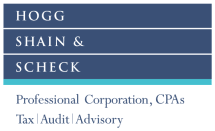Principal Residence Exemption Changes 2016
The Canada Revenue Agency (the “CRA”) has recently announced a number of significant changes in relation to the disposition of residences.
Section 40(2)(b) of the Income Tax Act provides a possible exemption on the gain when the property is sold. The exemption is applicable when the test in Section 40(2)(b) is satisfied and the property meets the definition of a “principal residence”. Applying the exemption is simply not a case of saying “I sold my home or cottage”.
Effective for the 2016 personal tax filing, taxpayers will now have to report the disposition of all residences. In past years, one only had to report the disposition of residences where the exemption did not apply. Therefore, for 2016 onwards, one must now report the sale of a residence even if the exemption applies.
There is also a proposed amendment that will allow the CRA to reassess a taxpayer at any time in the future if they fail to disclose the disposition of a residence. As you may be aware, traditionally, the CRA can only reassess within a three-year period.
It would appear that with all of this additional information, the CRA will be targeting those individuals who renovate residences and then sell for a profit.






